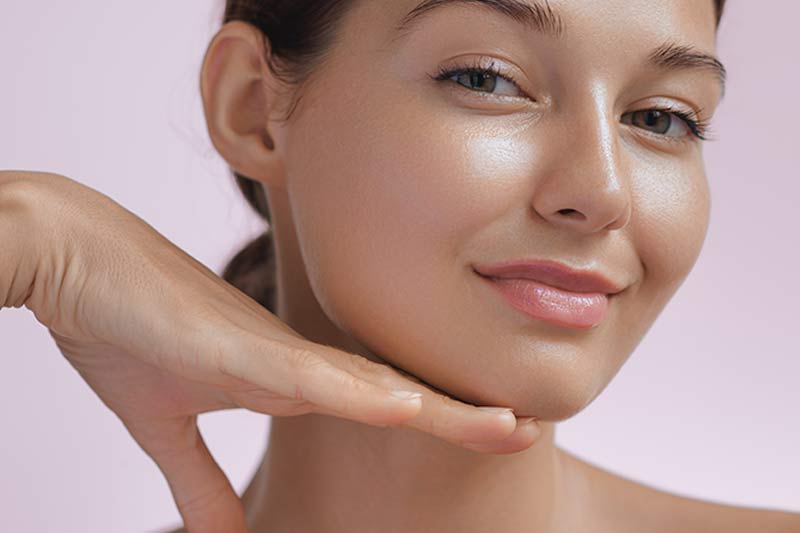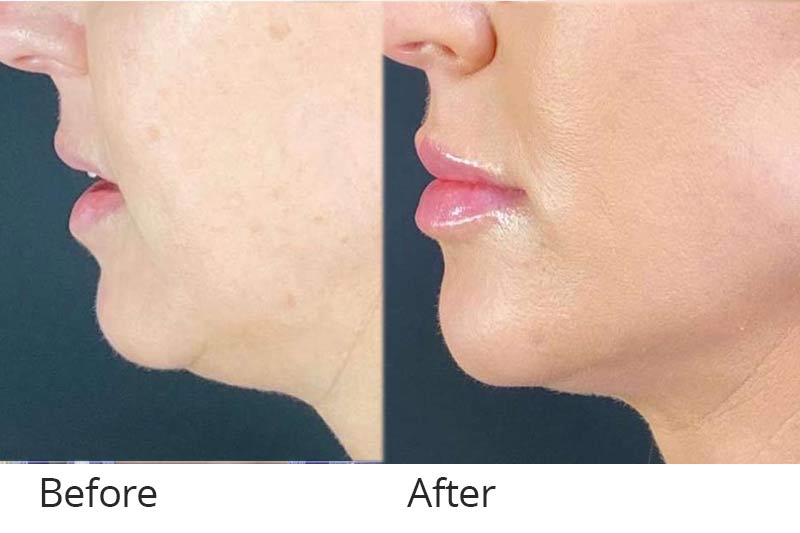The skin is the largest organ in the body, so it usually shows the first signs of aging by losing luster and vibrancy. We all wish we could keep our skin youthful, elastic, and firm.
Fortunately, non-surgical solutions can reduce looseness, rejuvenate the skin, and prevent premature aging. Liquid facelift is one such procedure, touted for its skin-tightening efficacy and minimal invasiveness.
Find out what to expect from a liquid facelift treatment, how to prepare for it, and whether it is the right solution for you.

What Is a Liquid Facelift?
This minimally invasive procedure involves inserting multiple dermal filler injections to address the loss of elasticity, add volume, restructure sagging skin, and achieve a plump, wrinkle-free look.
The provider strategically places fillers into target areas using a fine needle. Different injectable combinations provide varying results with an immediate lifting effect and a visibly firmer look.
Some medical spas offer a combination of dermal fillers and neurotoxin injections (e.g., Botox) and other types of injectables for a more dramatic rejuvenation effect.
Liquid Facelift Target Areas
The most common filler areas are the following:
- Temples
- Eyebrow area
- Undereye area
- Cheeks
- Lips
- Nasolabial folds
- Marionette lines
- Jawline
- Around scars
Types of Injectables Used for a Liquid Facelift
The main components of a liquid facelift are:
- Dermal fillers - These cosmetic injectables are injected under the skin to restore lost volume, smoothen lines, and soften creases. Common dermal fillers include hyaluronic acid (Restylane, Juvéderm , Versa), calcium hydroxyapatite (Radiesse), and poly-L-lactic acid (Sculptra) injectables.
- Neurotoxin injections – Botox, Xeomin, Jeuveau, and Dysport are the most common neurotoxin injectables on the market that may be included in the liquid facelift package. In combination with dermal fillers, neurotoxins can enhance the skin-lifting effects and secure a more stunning facial makeover by relaxing muscles that have a downward pull. Neurotoxin can also help heal fine lines and wrinkles caused by muscle contraction..
- Collagen or fat injectables –Soft tissue augmentation consists of collagen injections or fat transfers that can temporarily recontour the skin and treat wrinkles, lines, and scars. The fat is typically extracted from the patient’s body and re-injected into the selected site.
- Platelet-rich plasma – The injection of platelet-rich plasma (PRP) drawn from the patient’s blood can also provide a youthful, glowing appearance since nutrients in PRP can help reduce inflammation and support collagen production.
Liquid Facelift vs. Traditional Facelift
You can counter the signs of aging by undergoing surgery – a traditional facelift – or choose its non-surgical alternative – the liquid facelift.
The following chart displays key differences between these two facial rejuvenation procedures.
| Traditional facelift | Liquid facelift | |
| Technique | Removing excess skin or fat via incision, tightening muscles, repositioning underlying tissues, lifting and redraping facial skin. | Inserting a series of dermal filler injections, sometimes in combination with neurotoxin injections and a PRP treatment. |
| Target areas | Better results for double chin, jowls, neck, nasolabial folds, and midface region. | Most effective on the temples. Also used for cheeks, jowls, undereye area, and creases around the mouth. |
| Efficacy | More dramatic facial makeover, ideal for patients who want drastic changes. | Natural-looking results, ideal for patients who desire subtle changes. |
| Invasiveness | More invasive as it involves incisions (cutting, lifting, repositioning skin tissue). | Minimally invasive with fine needle punctures that leave little to no side effects. |
| Recovery time | Surgical facelift requires 10 to 14 days of recovery. | No downtime. Mild swelling or bruising may last for several days. |
| Side effects | Minor side effects include swelling and bruising. Serious complications are less common and include infection, bleeding, hematoma, scarring, nerve injury, and asymmetrical features. | Side effects are less severe and there are fewer potential complications. The most common side effects include redness, swelling, bruising, and tenderness. |
| Reversal | Non-reversible. | HA-based fillers are reversible with hyaluronidase injections. Other fillers dissolve naturally. |
| Longevity | Provides long-lasting results (up to 10 years). | Less predictable in terms of longevity; lasts up to 2 years. |
| Cost | More expensive; average price around $9,000. | Less expensive than surgery; prices range from $2,000 to $8,000. |
Note: Read about dissolving lip filler and what to expect from the hyaluronidase injection procedure.
What to Expect from a Liquid Facelift Treatment
Each treatment is tailored to the patient’s individual needs and preferences. The chosen medical practitioner will first discuss the desired outcome and asses your facial anatomy to determine the ideal treatment plan.
How to Prepare for a Liquid Facelift
Taking the following precautions before the procedure may reduce or prevent undesirable effects:
- Avoid blood-thinning medications two weeks before the treatment.
- Refrain from alcohol for 24 hours.
- Avoid sun exposure and refrain from tanning salons.
- Avoid treatments that may cause skin inflammation, such as chemical peels.
- Use gentle products suitable for sensitive skin to remove excess dirt, sweat, or makeup.
- Stay hydrated and use gentle moisturizers to enhance the longevity of the treatment.
Liquid Facelift Procedure
A liquid facelift is an in-office procedure that lasts thirty minutes to an hour, depending on the number of injection sites, treatment areas, and combination of injectables.
The procedure typically consists of the following steps:
- The provider maps the entire face to determine precise injection sites.
- The target areas are cleaned with mild antibacterial agents and mark the injection sites.
- Numbing cream may be applied to minimize discomfort if the patient’s pain threshold is low. However, most filler injections already contain a local anesthetic called lidocaine.
- The provider slowly injects the dermal filler, neurotoxin and/or PRP and then may gently massage the area to ensure even distribution.
- The provider cleans up the marked sites and treated areas and may apply an ice pack and/or arnica to reduce swelling, redness, or bruising.
Note: Find out if fillers hurt and how to ensure faster recovery.
Liquid Facelift Recovery and Aftercare
You can alleviate side effects, speed up the recovery, and secure more durable results with a good liquid facelift aftercare regime.
- Use natural skincare products suitable for your skin type to avoid skin irritation.
- Apply a broad-spectrum sunscreen to protect your skin from UV damage.
- Avoid blood thinners (e.g., ibuprofen, aspirin) to prevent bruising or swelling.
- Apply cold compresses to ease the initial discomfort, such as redness, swelling, or tenderness.
- Avoid strenuous exercise or physical activity.
- Stay away from direct sun or heat exposure.
- Avoid drinking alcohol for 24-48 hours after the treatment.
- Take over-the-counter pain relievers if you feel pain, tenderness, or itching.
- Avoid bending or lying down if the treatment includes Botox injections.
- Refrain from touching your face unless instructed otherwise. Doctors may recommend massaging your face after receiving an injection with poly-L-lactic acid (e.g., Sculptra).
Note: Follow these dermal filler aftercare and Botox aftercare guidelines to maximize the outcome of your liquid facelift treatment.
Liquid Facelift Results

Initial results are immediate but may become visible within two to three days, in case of swelling or bruising.
Dermal fillers are not permanent. They gradually wear off as the body breaks down and absorbs the injected substance. The longevity ranges from six months to two years, depending on the patient’s unique facial features and metabolism, the type of injectable, and the amount injected.
While most patients are satisfied with one session, others choose several treatments to maintain the results.
Liquid Facelift Benefits
Liquid facelift offers numerous advantages compared to the traditional facelift procedure. Chief benefits include the following:
- One session is usually enough to obtain the desired results.
- Fillers stimulate collagen and elastin regrowth, resulting in a natural appearance.
- Discomfort is minimal; most patients report the experience is virtually painless.
- Recovery is faster, so you can quickly resume your activities.
- It is less expensive than surgery.
- The procedure does not require any anesthesia.
- There are fewer potential risks and complications.
- You can dissolve your HA-based filler in case of unsatisfactory results.
- You can temporarily test a look before deciding on a more permanent surgical facelift.
Liquid Facelift Risks and Side Effects
Filler injectables pose little to no risk, with mild side effects that subside after several days.
The most common filler side effects include the following:
Less common risks include the following:
- Bumps
- Lumps
- Filler migration
- Infection
- Allergic reaction
- Skin rash
- Asymmetry
- Tissue death
- Bleeding at the injection site
- Hematoma
- Blindness
Choosing an experienced and licensed medical provider will reduce the risk of side effects and complications. Experienced providers are also more likely to produce a more natural looking result.
Who Is a Good Candidate for a Liquid Facelift?
A suitable candidate for a liquid facelift is a healthy adult who wants to lessen mild to moderate signs of aging without going under the knife.
Patients may choose the treatment to decide whether they wish to undergo a more permanent surgical procedure to reduce their wrinkles and creases.
A liquid facelift may not be suitable for individuals with excessively sagging skin, especially in the jowl area. Avoid the treatment if you have active skin conditions, such as sores, rashes, or cysts.
Talk to a board-certified provider to discuss your goals and set realistic expectations before scheduling an appointment.
How Much Does a Liquid Facelift Cost?
The price varies on the type and amount of filler injected. Pricing also differs based on the location of the chosen medical spa or cosmetic clinic.
Vibrant Skin Bar offers a 10-point facelift treatment with five syringes tailored to the patient’s needs and desired effect, for $2,999.
Liquid Facelift: FAQ
Most patients who have never tried filler injectables are concerned about the safety and efficacy of a liquid facelift procedure.
Is a Liquid Facelift Safe?
The treatment is considered safe when administered by board-certified injection providers or cosmetic surgeons.
Talk openly with your medical practitioner about the injection technique and the FDA approval status of the chosen filler injectables.
How Long Does a Liquid Facelift Last?
The results may last six to twenty-four months, depending on the type and the amount of injectable used, individual factors (e.g., the patient’s metabolic rate), and filler placement.
Occasional touch-ups help maintain the youthful look and prolong the results.
Is a Liquid Facelift Worth It?
A liquid facelift is an excellent anti-aging cosmetic solution for the following reasons:
- Minimal invasiveness
- Less downtime
- Faster recovery
- Reversible
- More affordable
Conclusion
With a liquid facelift you can achieve significant improvements in facial rejuvenation without resorting to surgery. A liquid facelift offers fast results by smoothing wrinkles, tightening loose skin, and increasing volume. It is a popular technique due to its minimal invasiveness, fewer risks, and natural-looking results.
If you wish to learn more about the treatment, contact the team at Vibrant Skin Bar.


